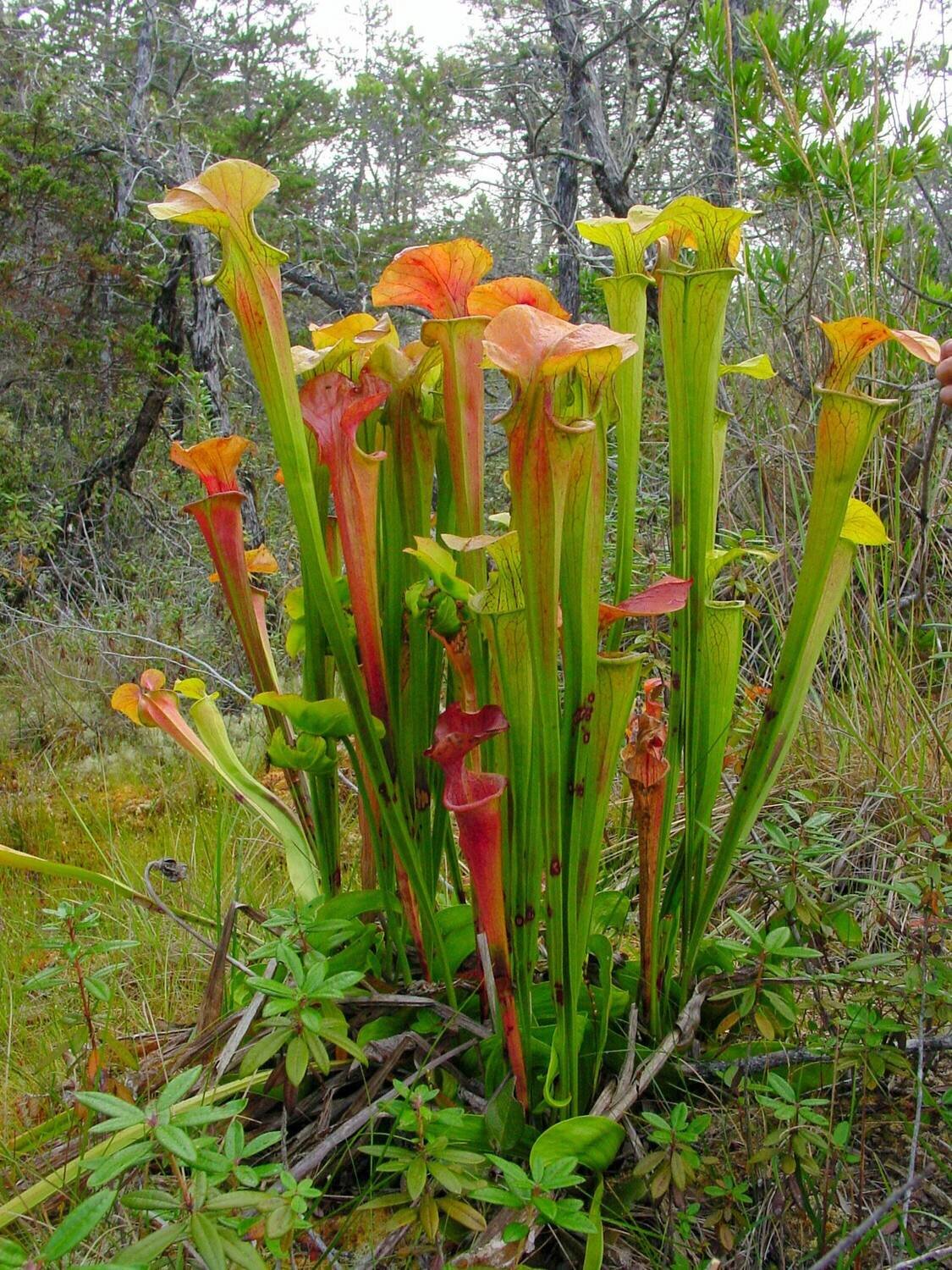
Green Pitcher Plant
We only sell freshly harvested seeds from small time growers, hobbyists and collectors.
Listing is for 5 Seeds
Sarracenia oreophila heavily veined is a perennial plant. This plant is almost extinct in the wild now. This very rare pitcherplant is restricted to Northeastern Alabama, North Georgia, and Southwestern North Carolina. A historical record exists for Tennessee. In nature, you can find it in wet areas, bogs swamps and moist woods and sandy floodplans. The pitchers are 20 to 75 centimeters in length by 6 to 10 centimeters in circumference at the orifice. It only produces nice pitchers in the Spring. The veins become darker and more pronounced with age. Your Sarracenia oreophila will slow down in growth and drop their pitchers by November. In its place will be non-carnivorous Winter leaves called phyllodia. This is perfectly normal. In mid-Summer and in the Fall it produces recurved phyllodia, non-pitcher leaves, that are 5 to 18 cm in length. The phyllodia last until the next Spring and should not be cut off until they turn brown. Its Winter leaves will provide the plant energy through photosynthesis. They trap their prey by offering them nectar to sip which is secreted around the lip of the plant and also at the base of the lid. Flying and crawling insects will find the nectar and if they take a wrong step, they will tumble into the pitcher. Once inside, they will find that retreat is impossible, due to short stiff hairs pointing downward. The inside of the pitchers are also very slippery, even to insects with the best traction. Once the insect reaches the bottom it is dissolved by enzymes in the bottom of the pitcher and the nutrient value is absorbed by the plant. The flowers have five sepals and five petals. They are green and yellow-green. From mid-March to early June the solitary, nodding yellow flowers develop and are approximately 4 to 5.5 centimeters in length. The scape curves at the end so that the flower points down. The flower stalk is 45 to 70 centimeters in length. From July to August, the fruit develops containing numerous seeds. Hardiness zones 8-9, (-10Â C/15Â F,-5Â C/25Â F) in Winter. They require seasons in order to survive long term. Sarracenia Oreophila go dormant during the Winter months, requiring 3-4 months of Winter dormancy. This plant is one of the first to emerge from dormancy, and one of the first to go dormant. If it is a very warm Summer, this plant can go into dormancy as early as September. Cool Summers will extend its growing period into October and November. The typical heated home is too warm in the Winter. The entire planter may be moved to an area where the temperature will remain between 2Â C/35Â F and 5Â C/40Â F. During the Winter months, restrict watering somewhat, but never allow the plants to dry completely. If left outside during Winter, protect them from dry freezing wind during deep freezes by covering the plant with black plastic. Uncover the plant when the deep freeze and dry freezing wind is over. Sarracenia oreophila does well in a soil mixture of 1 part peat moss and 1 part perlite. It requires nutrient-free soil that provides good drainage. Never use potting soil or fertilizer. Potting soil and fertilizer will kill your plant. Adult plants enjoy full sun outdoors. During the growing season, grow your plant outside in full sun, with a minimum of 6 hours of direct sunlight for vigorous growth. Keep the pot in standing water to keep the soil wet at all times in growing season. The rest of they year the soil should always be just damp as they can rot if kept too wet. Never allow the soil to dry out completely. Water must be distilled or rain water because they do not tolerate city or hard water. It is a good idea to place a pie pan or large saucer, with about an inch of water in it, under the pot. Elevate the pot by placing pebbles under it so that the base of the pot is barely in contact with the water, not submerged; the growing medium must stay moist, but never soggy. This will keep the humidity around the plant higher and it will ensure that the plant has a constant source of moisture. If you are growing it in a pond, keep the water level halfway on the pot. Avoid drowning the crown of the plant. Typical Summer temperatures where they grow naturally are in the mid 30's C (90's F).
Whimsy and Wonder proudly takes its place as a global leader in the realm of rare seeds, heirloom seeds, open-pollinated seeds, seeds for heirloom vegetables, hard-to-find seeds, and exotic seeds. Our reputation is built on a steadfast commitment to sourcing and distributing seeds of unparalleled quality. With a vast network that spans hobbyist growers, dedicated collectors, and seasoned professionals, we've meticulously curated an extensive inventory, unrivaled in its rarity and diversity, offering some of the planet's most elusive plant species.
Based in Canada, we've dedicated ourselves to serving plant enthusiasts in Canada, USA and worldwide with a promise of freshness and species authenticity. In an era where the online marketplace is rife with unscrupulous sellers peddling counterfeit seeds, we take our responsibility very seriously. Our stringent precautions and rigorous processes are designed to ensure the highest germination rates possible, setting us apart as a trusted source of rare seeds. We proudly offer Canada and worldwide shipping, extending our dedication to quality and authenticity to gardeners and growers around the globe, providing the assurance that your journey into the world of botanical whimsy and wonder begins with seeds you can trust.
